5 Best Practices for Your Office's Inventory Management
by Stephanie Faris on Monday, June 29 6:00
As a business grows, equipment becomes necessary to support all of its new employees. Desktops, printers, and copiers fill your offices, with old equipment being replaced by new devices every few years. As mobile devices have grown in popularity, businesses have faced a new challenge: keeping up with smartphones, tablets, and laptops that are only in the office when employees bring them in.
If someone isn t keeping up with all of this equipment, items will inevitably be misplaced over time. Tracking each device carefully will prevent costly device loss and help you determine when it s time for replacement. Here are five best practices every business should put in place for effective inventory management.
Item Tagging
The first step toward tracking items is to make them identifiable. This is done through assigning a number to each piece of equipment, then placing that number on the item with a tag. The tag should also identify the item as belonging to your organization. Ideally, you ll put in place a system that includes barcoding each item and scanning it to add it to your inventory and manage it from that point forward.
Automation
As much as possible, automate your inventory management. This may be as simple as an Excel spreadsheet or as complicated as one of the many software solutions now on the market. The system you use should have a way to easily pull reports to show your current inventory, items designated for surplus, and age of items.
GPS Tracking
One of the most accurate ways to keep up with your inventory is through the use of GPS tracking software. Using this technology, you can pull up all of your devices and determine exactly where they re located at a given time. This will also be extremely helpful if any of your workers ever reports a piece of equipment lost or stolen.
Annual Audits
Each year, someone on your staff should personally make contact with every piece of equipment you have. It isn t enough to have employees say they have an item at home. They should bring the item into the office and have it scanned or logged by a member of your designated inventory audit team. These annual audits will prevent something being logged on the inventory year after year when it was long ago lost or stolen.
Termination Procedures
When an employee leaves, equipment return should be a part of the dismissal process. Whatever the circumstances of an employee s departure from your company, your inventory team should pull a report of all equipment assigned to that employee and it should be required to be returned before a final paycheck can be issued. If a worker refuses to return it, you can then decide if you want to take the value of the item out of that final paycheck.
If your business doesn t have an inventory management process in place, you may be losing money. The amount of money you ll save by tracking equipment on a regular basis will be well worth the extra time it takes, since your employees will be held accountable for keeping up with the devices you buy them.
